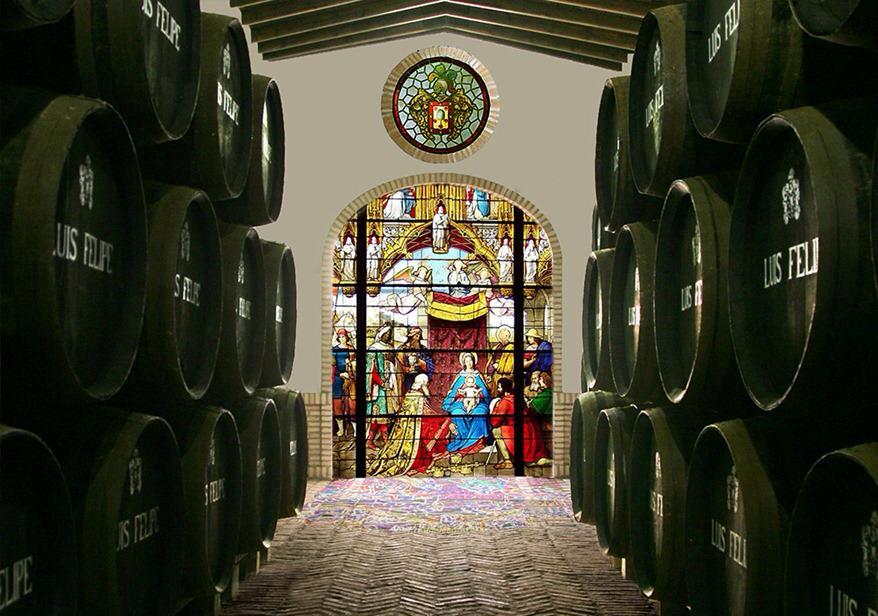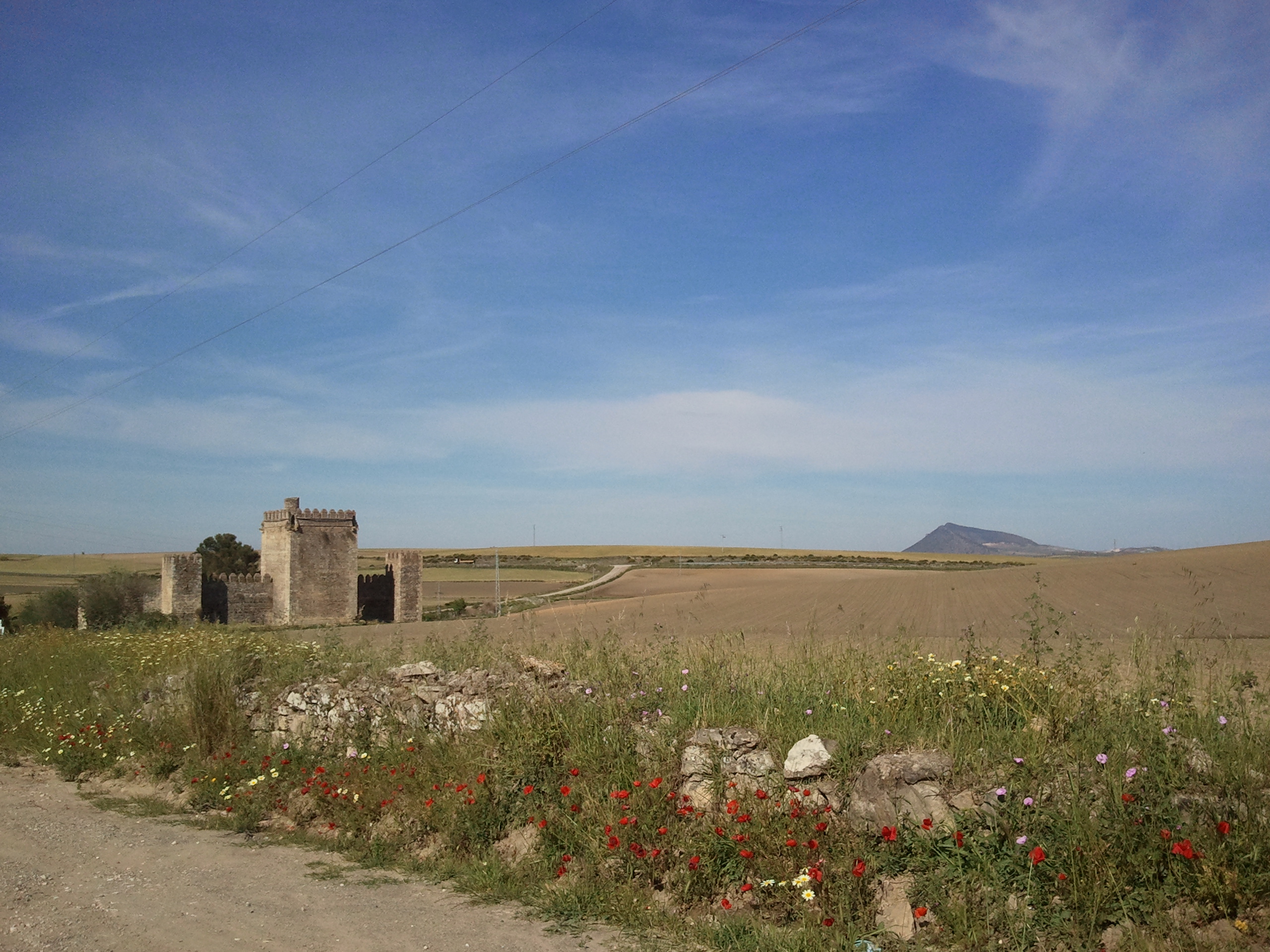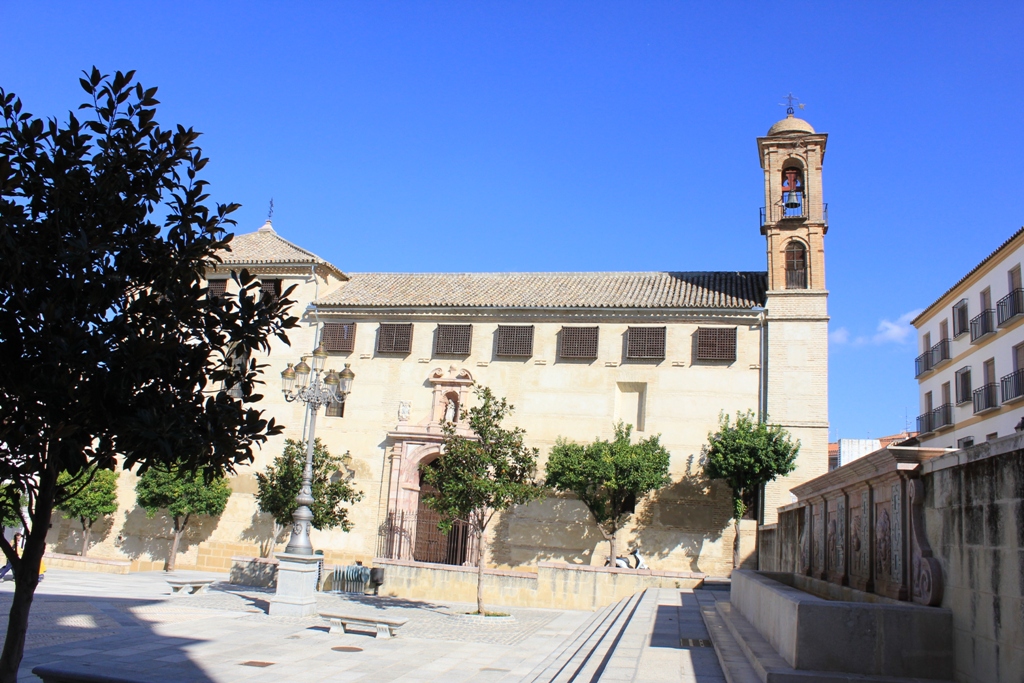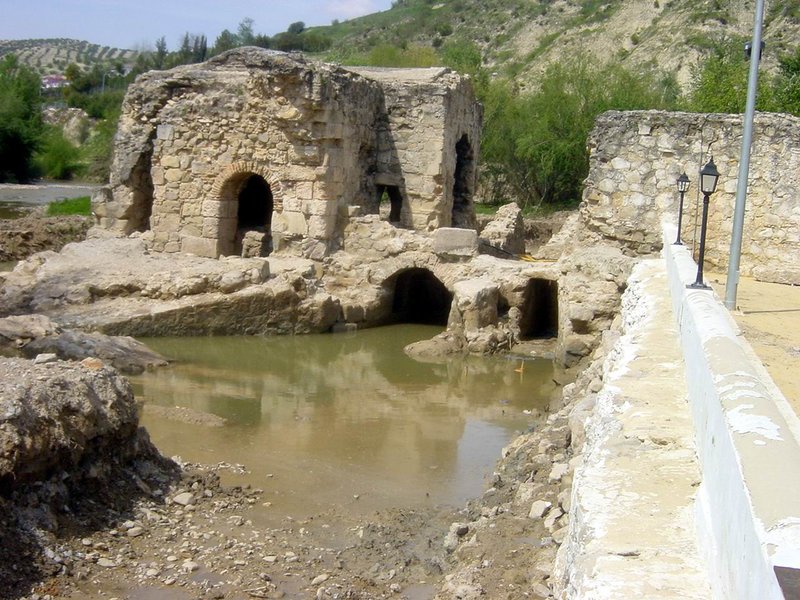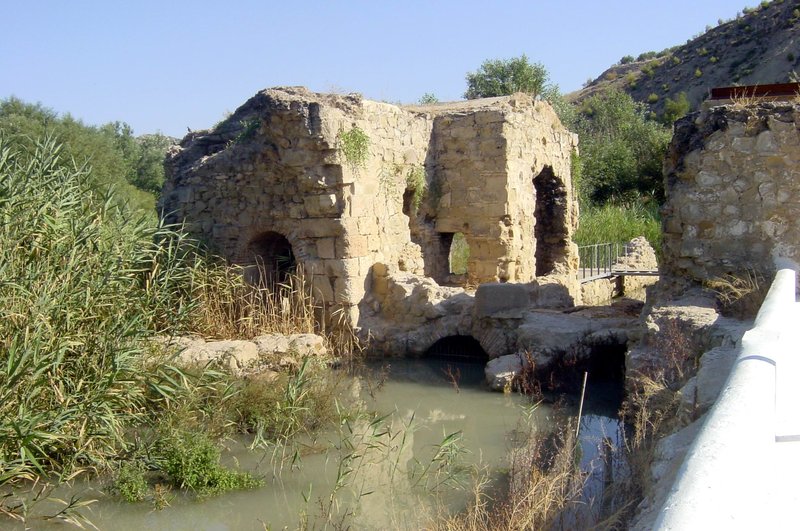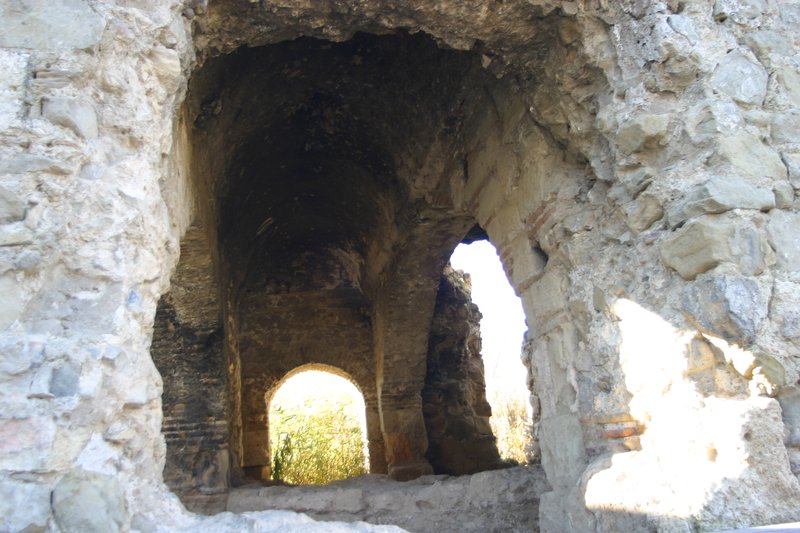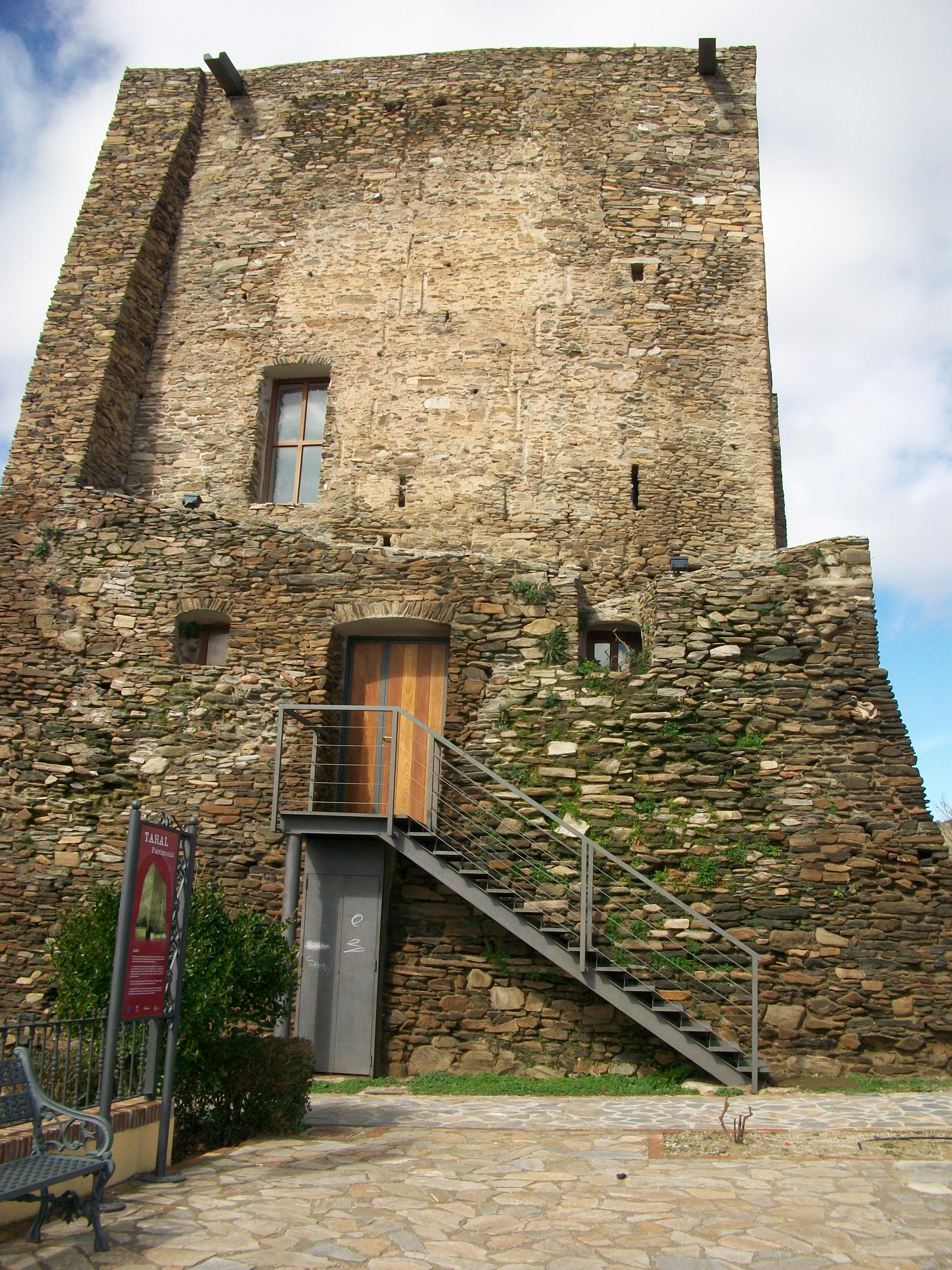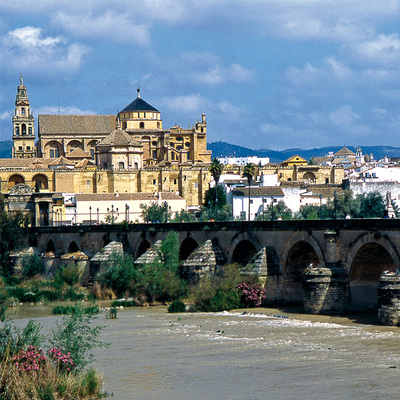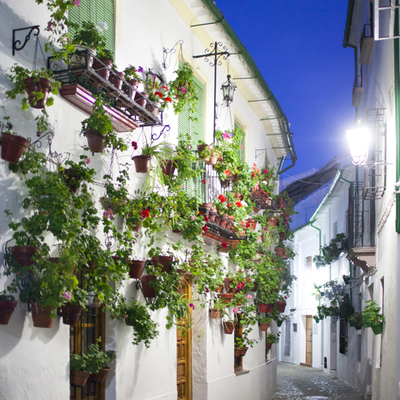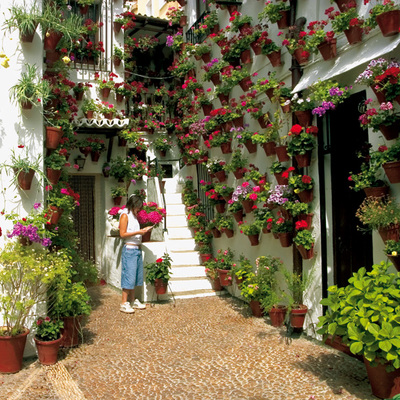Aceña Árabe de Jauja
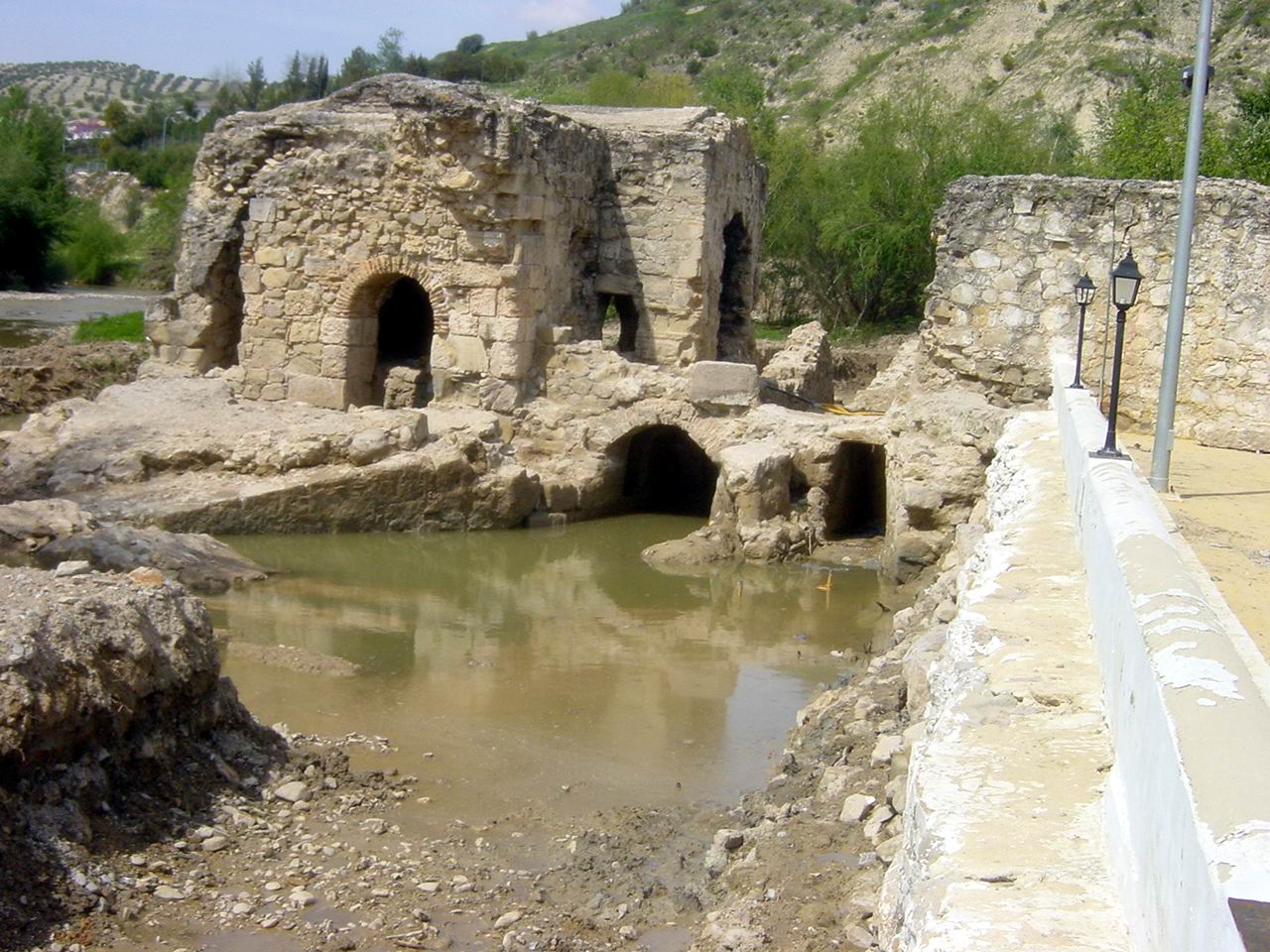
On the exterior arc of the meander the Genil River traces nearest the homes of Jauja is an old building known as the Arab water mill. Once upon a time these remains were a flour mill that used the force of the water to help in its tasks.
This architectural site, which is closely related to water, was probably the driving force behind the town of Jauja in the Middle Ages. It was built on the riverbed with a similar layout to that of a boat on order to tolerate the force of torrential flooding.
The complex was extended over time and adapted to the rise of the riverbed, resulting in a change to the motor system of its vertical paddle wheels, which had been used since its Al-Andalus origins up until the middle of the 17th century, to another of horizontal wheels, called “cubete de regolfo”. This type of construction, due to its economic significance, was undertaken by the Duke of Medinaceli and continued to operate up until the 1940s.
The Arab water mill has exquisitely preserved all of its architectural elements: further upriver you will find the wall and waterwheel in addition to different pillars that channelled the water towards the pipes that moved the wheels.
Meanwhile, the area where the grain was transformed into flour comprises the miller's house, the water mill and the space between them.
Services and infrastructure
Target audiences
Segments
Specialties
Season
Open to visitors
You may be interested

